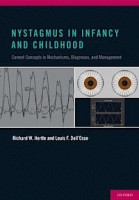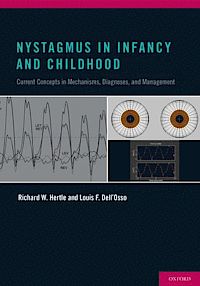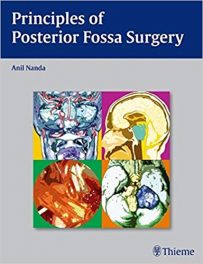 Author: Richard W. Hertle, MD and Louis F. Dell’Osso, PhD
Author: Richard W. Hertle, MD and Louis F. Dell’Osso, PhD
Publisher: Oxford University Press – 323 pages
Book Review by: Nano Khilnani
Nystagmus, as explained in Wikipedia, is a condition of involuntary eye movement, acquired in infancy or later in childhood, that may result in reduced or limited vision. Due to the involuntary movement of the eye, it is often called “Dancing Eyes”.
That source explains that when the head rotates about any axis, distant visual images are sustained by rotating eyes in the opposite direction on the respective axis. The semicircular canals in the vestibule sense angular momentum.
These send signals to the nuclei for eye movement in the brain. From here, a signal is relayed to the extra-ocular muscles to allow one’s gaze to fixate on one object as the head moves.
Nystagmus occurs when the semicircular canals are being stimulated while the head is not in motion. The direction of ocular movement is related to the semicircular canal that is being stimulated.
There are two key forms of nystagmus: pathological and physiological, with variations within each type. This condition may be caused by acquired congenital disorders, or central nervous system disorders; and toxicity, pharmaceutical drugs, alcohol, or rotational movement.
For a long time prior to the 1960s, not much was known or tried to find treatment for this involuntary eye movement disorder. As Professor Frank Elliott wrote in 1965 to neurologist Dr. Robert B. Daroff (who wrote the Foreword to this book):
“A lot of intensely intelligent and highly dedicated workers have given their lives to this subject of nystagmus, and very little has come of it.”
Fortunately though in the later 1960s and in the 1970s, something did begin to come of it: progress! Dr. Daroff writes that these technologic advances detailed below occurred that led to better understanding of eye movements in general and nystagmus in particular:
- the ability to record from single neurons in awake animals
- the development of tracers to determine neuronal connections
- the advent of computers that performed rapid data analysis
- the techniques that recorded precise eye movements and non-invasively permitted minutes of arc measurements in all planes
- the popularization of a systems approach, where models provided the necessary hypotheses to focus basic and clinical research
Previously considered untreatable, in recent years several pharmaceutical drugs have been identified for treatment of nystagmus, which has also occasionally been associated with vertigo.
This book can provide to you the following benefits: in diagnosis and treatment
- Algorhythms for examination
- Descriptions for diagnostic techniques
- Medical, surgical, alternative treatments of the visual system in infants, children
- Methodologies for investigation, including analysis software, models of the ocular motor system, and current hypotheses on the pathophysiology of ocular motor oscillations
Here s an overview of the contents of this book:
- Relevant Anatomy and Physiology
- Infantile Nystagmus Syndrome
- Fusion Maldevelopment Nystagmus Syndrome
- Other Types of Nystagmus of Infancy
- Differential Diagnosis of Nystagmus in Infancy and Childhood
- Afferent Visual System – Clinical Examination Procedures
- ‘Treatment
- Summary and Conclusions
This book is unique in that it describes, illustrates, and shares current understanding, evaluation and treatment of nystagmus in infancy and childhood. The duo of authors named below have broadened the frontiers of knowledge on this disorder, as you will discover from the research-based information provided in this book, with discussions and reference sources; and graphics, including charts, figures, formulas, images, and tables
Richard W. Hertle, MD, FACS, FAAO, FAAP is Director of the Children’s Vision Center, and Chief of Pediatric Ophthalmology at Children’s Hospital Medical Center of Akron. He is also Professor of Surgery in Ophthalmology at the Northeast Ohio Medical University in Rootstown, Ohio.
Louis F. Dell’Osso, PhD is Professor Emeritus in the Department of Neurology at Case Western Reserve University, and Director Emeritus of the Daroff-Dell’Osso Motility University.







